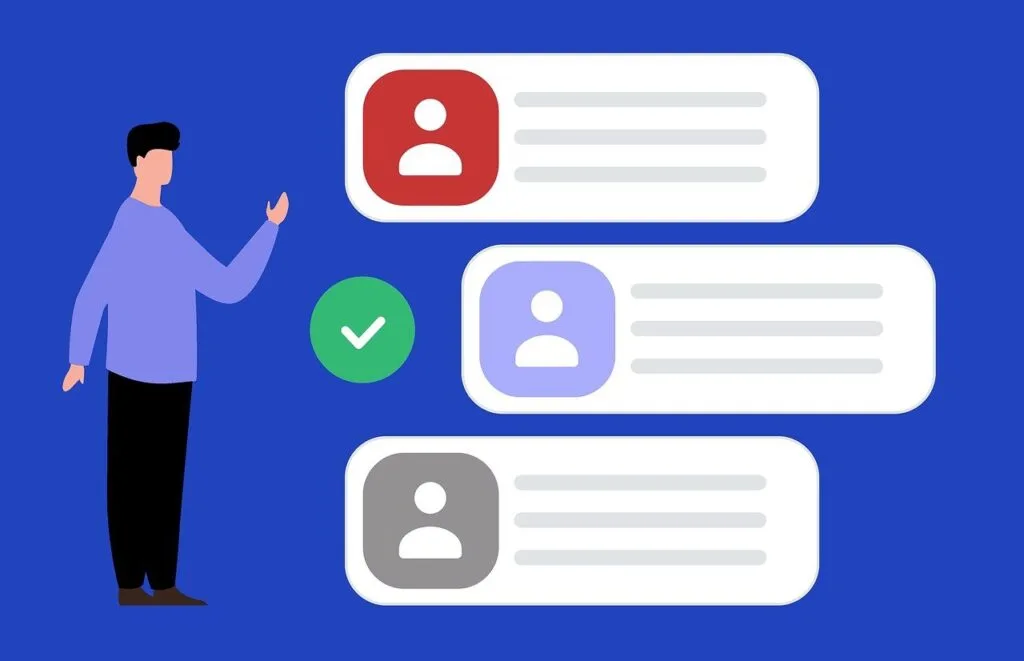This Article has been revised, edited and added to, by Poulomi Chakraborty.
- Understanding the Importance of Sensitivity in Crisis Communication
- Developing a Crisis Content Marketing Strategy
- Examples of Content Marketing in Crisis Situations
- Practical Tips for Content Marketing During a Crisis
- Listen to Your Audience
- Prioritize Transparency and Honesty
- Focus on Providing Value
- Show Empathy and Support
- Adapt Your Content Tone and Style
- Leverage Multiple Channels
- Monitor Feedback and Adjust Accordingly
- Collaborate with Trusted Voices
- Plan for Post-Crisis Content
- Create a Crisis Content Plan
- Maintaining a Long-Term Perspective
- The Role of Social Media in Crisis Content Marketing
- Conclusion
In today’s unpredictable world, businesses must be prepared to navigate crises with sensitivity and strategic foresight. Whether it’s a global pandemic, natural disaster, economic downturn, or social unrest, crises can significantly impact how businesses communicate with their audiences. Content marketing plays a crucial role in these times, offering a platform for brands to convey empathy, provide valuable information, and maintain trust. However, executing content marketing effectively during a crisis requires careful planning, adaptability, and a deep understanding of audience sentiment.
Understanding the Importance of Sensitivity in Crisis Communication

During a crisis, emotions run high, and audiences are more sensitive to the tone and content of the messages they receive. Missteps in communication can lead to backlash, damage to reputation, and loss of customer trust.
This is why it’s essential for brands to approach content marketing with empathy and sensitivity, ensuring that their messages resonate positively and provide genuine value.
For instance, consider two companies during a natural disaster. Company A continues with its regular marketing campaigns, promoting sales and discounts without acknowledging the crisis. Company B, on the other hand, pauses its promotional content and instead shares helpful resources, safety tips, and messages of solidarity.
It’s clear which company is more likely to be perceived positively. Company B’s approach demonstrates a commitment to supporting its audience during challenging times, thereby building stronger, trust-based relationships.
Comparing Crisis vs. Non-Crisis Content Marketing
The approach to content marketing during a crisis differs significantly from that during normal times. In a non-crisis environment, content marketing strategies typically focus on driving engagement, generating leads, and boosting sales through a mix of promotional and informational content. Brands can freely experiment with creative campaigns, humorous content, and aggressive sales tactics.
In contrast, during a crisis, the primary focus shifts to communication that prioritizes empathy, support, and transparency. Content should aim to inform, reassure, and connect with the audience on a human level.
Aggressive sales tactics and promotional content may come off as insensitive and out of touch. Instead, brands need to listen to their audience’s concerns, address their needs, and offer relevant solutions without appearing opportunistic.
For example, during the COVID-19 pandemic, many brands shifted their content strategies to address the immediate needs and concerns of their audiences. Fitness brands offered free online workouts to help people stay active at home, food delivery services shared updates on safety measures, and mental health organizations provided resources for managing anxiety and stress. This shift in content focus helped brands maintain relevance and build goodwill during a challenging time.
The Role of Empathy in Crisis Content Marketing
Empathy is at the heart of effective crisis content marketing. It involves understanding and sharing the feelings of your audience, and then reflecting that understanding in your communications. This approach helps build a deeper connection with your audience and fosters trust and loyalty.
Empathy-driven content might include messages of support, stories of community resilience, and practical advice tailored to the specific challenges your audience is facing. It’s about showing that your brand is not just a business but a caring entity that is committed to helping its community navigate difficult times.
For instance, a financial services company might create content that offers practical advice on managing personal finances during an economic downturn. This could include tips on budgeting, advice on accessing financial aid, and stories of how others are successfully navigating the crisis. By providing relevant and empathetic content, the company positions itself as a valuable resource and a trusted partner in times of need.
Building and Maintaining Trust During a Crisis
Trust is a crucial asset for any brand, especially during a crisis. How a brand communicates and behaves during challenging times can significantly impact its reputation and long-term relationships with its audience. Transparency, honesty, and consistency are key components of building and maintaining trust.
Transparency involves being open about how the crisis is affecting your business and what steps you are taking to address it. This might include updates on operational changes, safety measures, and support initiatives. Honesty is about communicating truthfully and avoiding the temptation to sugarcoat or downplay the situation. Consistency involves maintaining regular communication and keeping your audience informed with up-to-date and accurate information.
For example, a retail brand might regularly update its audience on how it is ensuring the safety of its employees and customers, any changes to store hours or delivery services, and ways customers can support the brand during the crisis. These updates not only keep the audience informed but also reinforce the brand’s commitment to transparency and customer care.
Developing a Crisis Content Marketing Strategy
Creating an effective content marketing strategy during a crisis requires thoughtful planning and a deep understanding of your audience’s needs and concerns. The following elements are crucial for developing a responsive and empathetic content strategy that can help your brand navigate challenging times.
Assessing the Situation
The first step in developing a crisis content marketing strategy is to assess the situation thoroughly. Understand the nature of the crisis, its impact on your audience, and how it affects your industry and business operations. This assessment will inform your approach and ensure that your content is relevant and sensitive to the current context.
For example, during the initial stages of the COVID-19 pandemic, businesses needed to quickly understand the widespread impact on their customers’ lives, including health concerns, economic uncertainty, and changes in daily routines. This understanding allowed them to create content that addressed these specific issues, such as health and safety tips, financial advice, and resources for working from home.
Re-Evaluating Your Content Calendar
In times of crisis, your existing content calendar may need to be adjusted to reflect the new reality. Review your planned content and decide what needs to be postponed, modified, or canceled. Prioritize content that addresses the immediate needs and concerns of your audience and aligns with the overall tone of empathy and support.
For instance, a travel company might need to pause promotional campaigns and instead focus on providing updates on travel restrictions, offering tips for staying safe while traveling, and sharing stories of destinations coping with the crisis. This shift ensures that the content remains relevant and sensitive to the current situation.
Crafting Your Messaging
Your messaging during a crisis should be clear, compassionate, and informative. It’s important to strike the right balance between providing valuable information and conveying empathy. Avoid overly promotional language and focus on how your brand can support and help your audience.
Consider the following elements when crafting your crisis messaging:
- Empathy: Acknowledge the challenges your audience is facing and express genuine concern for their well-being.
- Support: Highlight how your brand is supporting its employees, customers, and community during the crisis.
- Information: Provide accurate and up-to-date information that is relevant to your audience’s needs.
For example, a fitness brand might craft a message like, “We understand that staying active is challenging right now. To help you maintain your fitness routine, we’re offering free online classes and resources to keep you motivated and healthy at home. Your well-being is our top priority, and we’re here to support you every step of the way.”
Adapting Content Formats
Different content formats can be more effective in conveying your message during a crisis. Consider using a mix of written, visual, and interactive content to engage your audience and provide them with valuable information.
For example, create blog posts that address common questions and concerns, infographics that simplify complex information, videos that provide a personal touch, and webinars or live streams for real-time interaction. Adapting your content formats to suit the needs of your audience can enhance engagement and ensure that your message is effectively communicated.
Engaging with Your Audience
Engagement is crucial during a crisis. Actively listen to your audience’s concerns and feedback, and respond promptly and thoughtfully. Use social media, email, and other communication channels to maintain an open line of dialogue and provide timely updates.
For instance, if customers are expressing concerns about product availability or delivery times, address these issues directly in your content and provide regular updates. Engaging with your audience in a transparent and supportive manner helps build trust and demonstrates your commitment to their well-being.
Collaborating with Partners and Influencers
Collaborating with partners and influencers can amplify your message and extend your reach. Identify partners and influencers who share your values and can help communicate your message with authenticity and credibility.
For example, during a health crisis, a wellness brand might partner with healthcare professionals or fitness influencers to share expert advice and tips. This collaboration not only enhances the credibility of the content but also helps reach a broader audience who can benefit from the information.
Monitoring and Adjusting Your Strategy
A crisis situation is dynamic and can change rapidly. Continuously monitor the situation and the effectiveness of your content strategy. Use analytics tools to track engagement, feedback, and overall performance. Be prepared to adjust your strategy as needed to respond to new developments and evolving audience needs.
For example, if you notice that certain types of content are resonating more with your audience, focus more on creating similar content. Conversely, if some messages are not well-received, reassess and modify your approach. Flexibility and responsiveness are key to maintaining relevance and effectiveness during a crisis.
Communicating Internally
Internal communication is just as important as external communication during a crisis. Ensure that your team is well-informed and aligned with the overall content strategy. Provide clear guidelines and regular updates to keep everyone on the same page and enable them to respond effectively to customer inquiries and concerns.
For instance, hold regular virtual meetings to discuss the latest developments, share insights, and coordinate efforts. Ensure that all team members understand the key messages and the tone to be used in all communications. A unified and informed team can enhance the overall effectiveness of your crisis content marketing strategy.
Examples of Content Marketing in Crisis Situations

Examining real-world examples of how businesses have navigated crises with effective content marketing can provide valuable insights and inspiration. Here are some notable case studies that highlight different approaches to content marketing during challenging times.
Airbnb’s Response to the COVID-19 Pandemic
When the COVID-19 pandemic struck, Airbnb faced a significant challenge. Travel restrictions and safety concerns led to a dramatic drop in bookings. In response, Airbnb quickly pivoted its content marketing strategy to address the new reality and support its community.
Adjusting the Content Calendar
Airbnb paused its usual promotional content and focused on providing relevant information and support to hosts and guests. The company created a dedicated COVID-19 resource center on its website, offering updates on travel restrictions, safety guidelines, and cancellation policies.
Crafting Empathetic Messaging
Airbnb’s messaging during the pandemic was empathetic and supportive. The company acknowledged the uncertainty and stress faced by its community and communicated its commitment to their safety and well-being. For example, Airbnb’s CEO Brian Chesky sent out a heartfelt letter to hosts and guests, expressing gratitude and outlining the steps the company was taking to support them.
Launching New Initiatives
To adapt to the new circumstances, Airbnb introduced new initiatives such as Online Experiences, which allowed hosts to offer virtual activities. This pivot not only provided a new revenue stream for hosts but also kept the community engaged. The company used content marketing to promote these Online Experiences, featuring stories and testimonials from hosts and participants.
Ford’s Response to the Financial Crisis
During the 2008 financial crisis, Ford Motor Company faced significant challenges as the automotive industry was hit hard. However, Ford leveraged content marketing to navigate the crisis and emerge stronger.
Re-Evaluating Content Strategy
Ford shifted its content strategy to focus on transparency and customer support. The company openly communicated about the steps it was taking to weather the financial storm, including restructuring efforts and financial stability measures. This transparency helped build trust with customers and investors.
Highlighting Value and Reliability
Ford’s content highlighted the value and reliability of its vehicles, emphasizing the long-term benefits of owning a Ford. The company shared customer testimonials and case studies that showcased the durability and performance of its vehicles, reinforcing the message that Ford was a dependable choice during uncertain times.
Engaging with the Community
Ford engaged with its community through various channels, including social media and customer forums. The company encouraged customers to share their experiences and stories, which were then featured in content marketing campaigns. This engagement fostered a sense of community and loyalty among Ford’s customer base.
Johnson & Johnson’s Response to Product Recalls
Johnson & Johnson has faced several product recalls over the years, but its response to the Tylenol crisis in the 1980s remains a benchmark for crisis management. The company’s handling of the situation demonstrated the importance of transparency and swift action in content marketing during a crisis.
Immediate and Transparent Communication
When it was discovered that Tylenol capsules had been tampered with, leading to several deaths, Johnson & Johnson immediately pulled the product from shelves and issued public warnings. The company used content marketing to provide timely updates and safety information to the public, ensuring transparency and building trust.
Prioritizing Public Safety
Johnson & Johnson’s content emphasized its commitment to public safety. The company launched a major campaign to inform consumers about the risks and the steps being taken to prevent future incidents. This included introducing tamper-proof packaging and promoting it through various content channels.
Rebuilding Trust
In the aftermath of the crisis, Johnson & Johnson focused on rebuilding trust with its audience. The company shared stories of its efforts to improve product safety and featured testimonials from satisfied customers who continued to trust Tylenol. This content marketing strategy helped Johnson & Johnson regain its reputation and customer loyalty.
Starbucks’ Response to Social Issues
Starbucks has consistently used content marketing to navigate social issues and demonstrate its commitment to social responsibility. The company’s response to various social movements and crises has highlighted the importance of aligning content marketing with corporate values.
Addressing Social Issues
Starbucks has taken a proactive stance on social issues such as racial equality, environmental sustainability, and employee welfare. The company uses content marketing to communicate its initiatives and engage with its audience on these important topics.
For example, during the Black Lives Matter movement, Starbucks publicly supported the cause and shared content highlighting its efforts to promote diversity and inclusion within the company. This included stories of employees, partnerships with minority-owned businesses, and community outreach programs.
Engaging with the Audience
Starbucks actively engages with its audience on social media, encouraging open dialogue and feedback. The company’s content often features user-generated content, such as photos and stories from customers and employees, creating a sense of community and shared values.
Promoting Corporate Responsibility
Through its content marketing, Starbucks consistently promotes its corporate responsibility initiatives. This includes sharing progress reports, sustainability efforts, and philanthropic activities. By aligning its content with its values, Starbucks reinforces its brand identity and builds trust with its audience.

Practical Tips for Content Marketing During a Crisis
Navigating a crisis with sensitivity and effectiveness requires a well-thought-out content marketing strategy. Here are practical tips to help you manage your content marketing efforts during challenging times.
Listen to Your Audience
Understanding your audience’s needs and concerns is the first step in crafting relevant and empathetic content during a crisis. Use social media monitoring tools, surveys, and direct feedback to gather insights into what your audience is experiencing and how you can support them.
For instance, during a health crisis, you might find that your audience is concerned about safety measures, health tips, and mental well-being. By listening to these concerns, you can tailor your content to address these specific issues, providing valuable information and support.
Prioritize Transparency and Honesty
Transparency and honesty are crucial during a crisis. Be open about how the crisis is affecting your business and what steps you are taking to address it. Avoid the temptation to hide negative news or spin the truth, as this can damage your credibility and trustworthiness.
For example, if supply chain disruptions are causing delays in product delivery, communicate this openly with your customers. Explain the reasons for the delays, what you are doing to mitigate the impact, and provide regular updates. This transparency helps manage customer expectations and reinforces your commitment to keeping them informed.
Focus on Providing Value
During a crisis, your content should prioritize providing value over promoting your products or services. Focus on creating content that helps your audience navigate the challenges they are facing. This can include informational guides, how-to videos, expert interviews, and resources that address their specific needs.
For instance, if you run a financial services company during an economic downturn, create content that offers practical advice on budgeting, managing debt, and accessing financial assistance. By providing valuable information, you position your brand as a trusted resource and build deeper connections with your audience.
Show Empathy and Support

Empathy is essential in crisis communication. Show genuine concern for your audience’s well-being and offer messages of support. This can help build emotional connections and demonstrate that your brand cares about more than just business.
For example, during a natural disaster, share messages of solidarity and support. Highlight how your company is contributing to relief efforts, supporting affected communities, or helping employees during the crisis. Empathetic content helps humanize your brand and fosters goodwill.
Adapt Your Content Tone and Style
The tone and style of your content should reflect the gravity of the situation. Avoid using overly promotional language, humor, or casual tones that may come across as insensitive. Instead, adopt a more compassionate and reassuring tone that resonates with your audience’s current state of mind.
For instance, during a global pandemic, a health and wellness brand might use a calm and supportive tone in its content, offering tips for maintaining physical and mental health. This approach shows that the brand is attuned to the seriousness of the situation and is committed to helping its audience cope.
Leverage Multiple Channels
Use multiple channels to reach your audience and disseminate your crisis-related content. Different segments of your audience may prefer different platforms, so a multi-channel approach ensures broader reach and engagement.
For example, share crisis updates and valuable content on your website, blog, social media channels, email newsletters, and even through direct mail if appropriate. Tailor the content for each platform to maximize its impact and engagement.
Monitor Feedback and Adjust Accordingly
Continuously monitor feedback from your audience and adjust your content strategy as needed. Use analytics tools to track engagement, sentiment, and overall performance of your content. Be responsive to your audience’s needs and be prepared to pivot your strategy based on their feedback.
For instance, if you notice that your audience is highly engaged with content related to stress management during a crisis, consider creating more content on this topic, such as webinars, e-books, and social media posts. Regularly reviewing and adjusting your strategy ensures that your content remains relevant and effective.
Collaborate with Trusted Voices
Partnering with trusted voices in your industry or community can enhance the credibility and reach of your content. Collaborate with experts, influencers, and organizations that share your values and can provide additional insights and support to your audience.
For example, a mental health organization might partner with psychologists and wellness influencers to create content that addresses mental health challenges during a crisis. These collaborations can provide valuable perspectives and amplify your message to a wider audience.
Plan for Post-Crisis Content
While it’s essential to focus on the present, it’s also important to plan for the future. Consider how your content strategy will evolve once the crisis subsides. Plan content that helps your audience transition back to normalcy and addresses any long-term impacts of the crisis.
For instance, after a financial crisis, a business consultancy might create content that helps companies rebuild and adapt to new market conditions. This forward-thinking approach ensures that your brand remains relevant and continues to support your audience in the long term.
Create a Crisis Content Plan
Having a crisis content plan in place can help you respond more effectively when a crisis occurs. This plan should outline key steps, messaging guidelines, and roles and responsibilities within your team. Regularly review and update your plan to ensure it remains relevant and comprehensive.
For example, your crisis content plan might include a framework for assessing the situation, guidelines for crafting empathetic and transparent messaging, and a checklist for monitoring and adjusting your strategy. Having this plan in place allows you to respond quickly and confidently during a crisis.
Maintaining a Long-Term Perspective
While navigating a crisis requires immediate action, it’s also important to maintain a long-term perspective. Consider how your actions and content during the crisis will impact your brand’s reputation and relationships with your audience in the future. Strive to build trust and demonstrate your commitment to your audience’s well-being, knowing that these efforts will pay off in the long run.
For instance, a brand that consistently prioritizes empathy, transparency, and value during a crisis will likely emerge with stronger customer loyalty and a positive reputation. This long-term perspective helps guide your actions and ensures that your crisis content marketing strategy aligns with your overall brand values and goals.
The Role of Social Media in Crisis Content Marketing

Social media platforms play a critical role in content marketing during a crisis. They provide a direct line of communication with your audience and offer real-time feedback that can inform your strategy. Effectively leveraging social media during a crisis requires careful planning, active engagement, and a focus on transparency and empathy.
Real-Time Communication
One of the most significant advantages of social media is the ability to communicate in real-time. During a crisis, timely updates are crucial. Use social media to share important information, such as changes to business operations, safety guidelines, and resources for support.
For example, during a natural disaster, a local business can use its social media channels to inform customers about temporary closures, alternative service options, and community relief efforts. Regular updates keep your audience informed and demonstrate your commitment to their well-being.
Engaging with Your Audience
Active engagement on social media is essential during a crisis. Respond promptly to comments, questions, and concerns from your audience. Show that you are listening and that you care about their experiences. Engagement fosters a sense of community and trust.
For instance, if customers express concerns about product availability or delivery delays, address these issues directly in your responses. Apologize for any inconveniences, provide clear explanations, and offer solutions or alternatives. This responsive approach can help mitigate negative sentiments and build positive relationships.
Sharing Empathetic Content
Empathy should be at the forefront of your social media content during a crisis. Share messages of support, solidarity, and compassion. Highlight stories of resilience and community efforts, and use your platform to uplift and inspire your audience.
For example, a healthcare organization might share stories of frontline workers’ dedication and bravery, along with messages of gratitude and encouragement from the community. By focusing on empathetic content, you can create a positive and supportive online environment.
Collaborating with Influencers
Influencers can amplify your message and extend your reach during a crisis. Partner with influencers who align with your brand values and can authentically communicate your message to their followers. Influencers can help spread important information, share personal stories, and offer support to your audience.
For example, a food brand might collaborate with chefs or nutritionists to share healthy recipes and cooking tips during a health crisis. These collaborations can provide valuable content for your audience and enhance your brand’s credibility.
Using Visual Content
Visual content is highly engaging and can effectively convey important messages during a crisis. Use images, videos, infographics, and live streams to communicate with your audience. Visual content can simplify complex information and make it more accessible.
For instance, create infographics that illustrate safety guidelines, step-by-step videos that demonstrate helpful tips, and live streams that provide real-time updates and Q&A sessions. Visual content can capture your audience’s attention and make your messages more memorable.
Monitoring Social Media Sentiment
Monitoring social media sentiment helps you understand how your audience feels about your brand and your response to the crisis. Use social media listening tools to track mentions, keywords, and hashtags related to your brand and the crisis. Analyze the sentiment of these mentions to gauge public perception and identify areas for improvement.
For example, if you notice an increase in negative sentiment related to a particular issue, address it promptly and transparently. Use the insights gained from sentiment analysis to refine your content strategy and ensure that your messages resonate positively with your audience.
Providing Useful Resources
Share useful resources and information that can help your audience navigate the crisis. This could include links to government guidelines, expert advice, support services, and relevant tools. Providing valuable resources demonstrates your commitment to supporting your audience and can enhance your credibility.
For instance, a tech company might share links to free software tools, online learning platforms, and virtual collaboration resources during a crisis that forces people to work from home. By offering practical solutions, you position your brand as a helpful and reliable resource.
Encouraging User-Generated Content

Encourage your audience to share their own experiences and stories related to the crisis. User-generated content (UGC) can provide authentic perspectives and foster a sense of community. Feature UGC on your social media channels to highlight the resilience and positivity of your audience.
For example, a fitness brand might invite customers to share photos and videos of their home workouts using a specific hashtag. Reposting this content not only provides social proof but also creates a sense of camaraderie and shared experience among your audience.
Being Mindful of Timing and Tone
Timing and tone are critical when posting on social media during a crisis. Be mindful of the context and avoid posting content that may be perceived as insensitive or inappropriate. Ensure that your tone is compassionate, respectful, and aligned with the gravity of the situation.
For instance, during a humanitarian crisis, avoid posting promotional content or light-hearted messages that could come across as tone-deaf. Instead, focus on sharing supportive and informative content that aligns with the needs and emotions of your audience.
Planning for Crisis Communication
Having a crisis communication plan for social media can help you respond more effectively when a crisis occurs. This plan should outline key steps, messaging guidelines, roles and responsibilities, and approval processes. Regularly review and update your plan to ensure it remains relevant and comprehensive.
For example, your crisis communication plan might include templates for common types of social media posts, a list of key contacts for approvals, and guidelines for engaging with your audience. Being prepared with a well-thought-out plan allows you to act quickly and confidently during a crisis.
Conclusion
Content marketing during a crisis requires sensitivity, empathy, and strategic planning. By understanding your audience’s needs, providing valuable information, and maintaining transparent communication, you can build trust and foster stronger relationships. Leveraging social media for real-time updates, engagement, and support is crucial in reaching and resonating with your audience.
Collaborating with influencers, using visual content, and monitoring feedback help enhance your efforts and ensure relevance. Remember, a well-prepared crisis communication plan enables you to respond quickly and effectively. Navigating a crisis with thoughtful content marketing not only supports your audience but also strengthens your brand’s reputation and loyalty in the long run.
Read Next
- A/B Testing in Digital Marketing: Strategies for Optimization and Improvement
- User Intent and Digital Marketing: Crafting Campaigns that Truly Resonate
- The Science Behind Viral Campaigns in Digital Marketing
- The Role of Chatbots in Modern Digital Marketing: Enhancing User Engagement
- Digital Marketing in Crisis Situations: Navigating Challenges with Sensitivity





















Comments are closed.